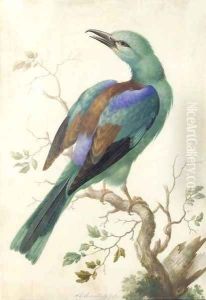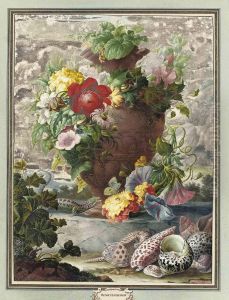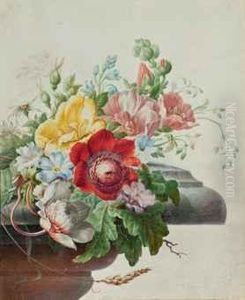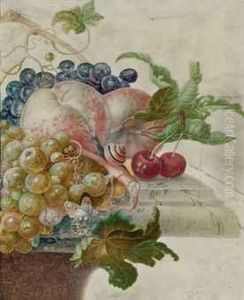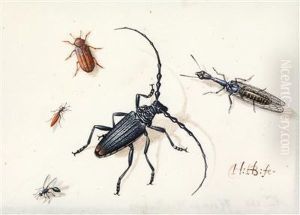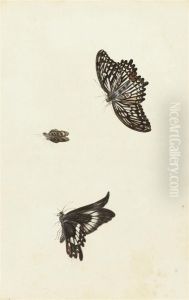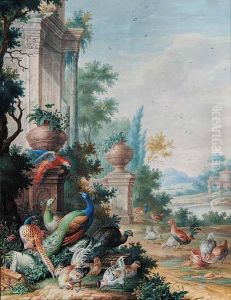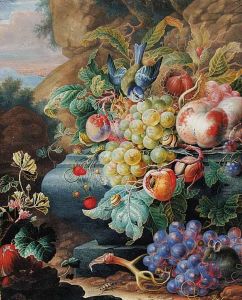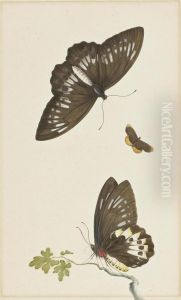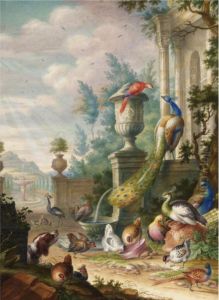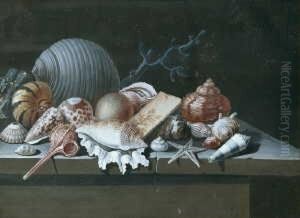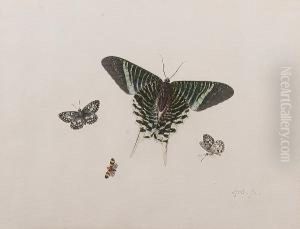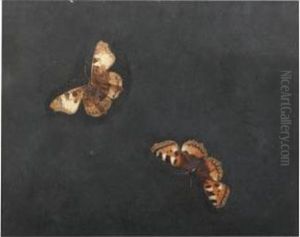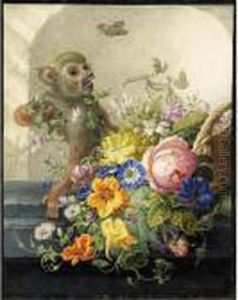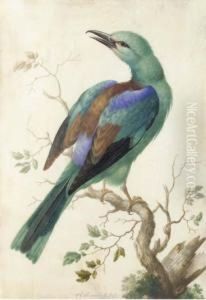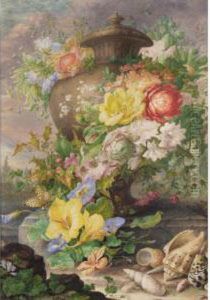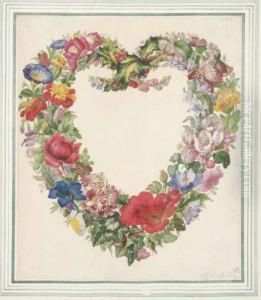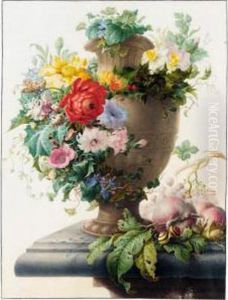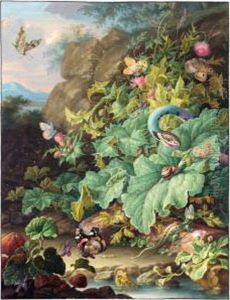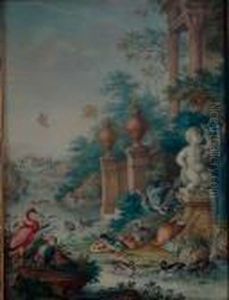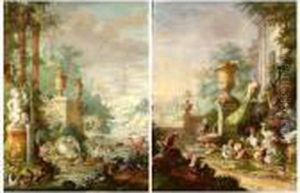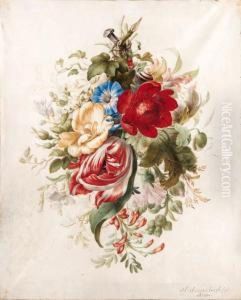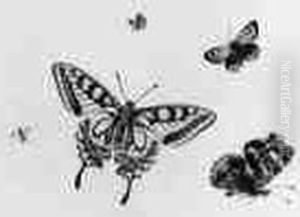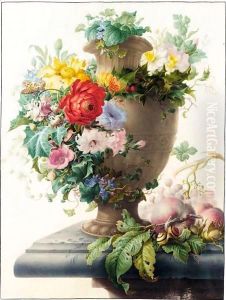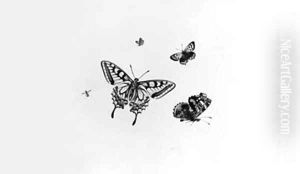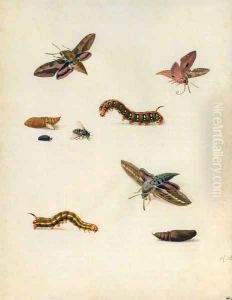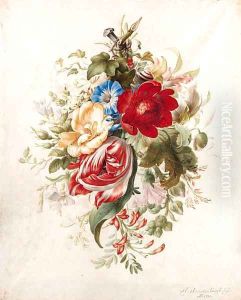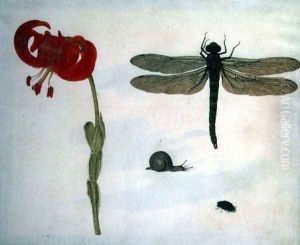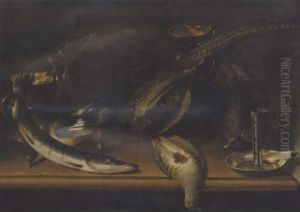Herman Henstenburgh Paintings
Herman Henstenburgh was a Dutch painter and printmaker born in 1667 in Hoorn, a town in the Netherlands. He was known for his exquisite watercolors and prints, particularly focusing on still lifes, flowers, and fruits, executed with a remarkable delicacy and precision. Henstenburgh's work is characterized by its fine detail, vibrant colors, and the skillful use of light and shadow, which brought his compositions to life and earned him a place among the notable Dutch artists of the 17th and early 18th centuries.
Henstenburgh's artistic journey began under the guidance of his father, Jan Henstenburgh, who was also an artist. This early exposure to art within his family set the foundation for his future career. He later became a pupil of Johannes Bronckhorst, further honing his skills and developing his distinctive style. Henstenburgh's talent quickly became apparent, and his works gained recognition for their beauty and technical proficiency.
Throughout his career, Henstenburgh remained in Hoorn, where he contributed significantly to the local art scene. Unlike many of his contemporaries who traveled extensively for inspiration or patronage, Henstenburgh found his muse in the natural beauty surrounding him and from the imported exotic fruits and flowers that were becoming increasingly available in the Netherlands during this period. This allowed him to create works that were not only appealing for their aesthetic value but also served as a documentation of the botanical curiosities of his time.
Henstenburgh's paintings and prints were highly sought after by collectors and connoisseurs during his lifetime and continue to be appreciated by art historians and enthusiasts today. His meticulous approach to depicting the natural world has left a lasting legacy in the field of botanical illustration and still life painting. Despite his relatively limited fame outside of the Netherlands, his work is held in high regard and can be found in various museum collections and private holdings around the world.
Herman Henstenburgh passed away in 1726 in his hometown of Hoorn. His death marked the end of a career that had significantly contributed to the Dutch Golden Age of painting, particularly in the genre of still life and botanical illustration. Henstenburgh's works remain a testament to his mastery of the watercolor medium and his ability to capture the essence of his subjects with both accuracy and artistic flair.
